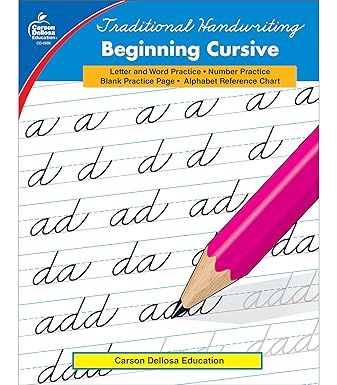Why Teaching Cursive is Valuable
Educational



Multiple studies have been done on the effects of cursive on the brain and how it utilizes different parts of the brain than typing. The current culture relies heavily on technology, touch screens and typing for its instant gratification and efficiency. And I’m all for this since we utilize this everyday ourselves. However, it is vital that handwriting including cursive is taught in your homeschool, even just in the basic levels because it’s proven to help stimulate the brain in a different way.
Helps with handwriting issues
Our son was struggling with the direction of letters. He always has struggled with handwriting due to his ADHD and the time it takes to write it out. It’s frustrating and time consuming. So many journal entries and assignments have messy scrawled letters. Then when he reached third grade level, we decided to try cursive and as I suspected from my years of classroom teaching, his handwriting improved. Why? There’s a magic to the different part of the brain that is utilized when writing cursive. I could finally read his handwriting and he was pleased with himself because the letters were uniform and going the right direction.

Teaches Skills
Learning cursive teaches patience and appreciation for faster options. Generations before us only knew handwriting and were often required to write in cursive 24/7 when they were in school. This was also the generations of writing letters and book reports on paper. Though this time has somewhat passed and most of the current generation is more in tune with texting and emailing, handwriting is still necessary.
Teaches creativity and expression
Cursive can show artful creativity – in many ways cursive, like calligraphy, is an art form. With the patterns and shapes of the loops, it can look almost “pretty” when written. How rewarding would it be if your child could enjoy writing their journals? Or writing on worksheets in cursive, knowing that they can read it and it looks nice? It may seem like a small thing to adults, but for children, it creates autonomy to be able to write clear and coherently. It is a form of expression and it’s a valuable skill.

Cursive is more necessary than you may realize…
If anything, think of cursive as one of those necessities in the school curriculum. Or a rite of passage like any other subject requirement. Math, science, English, learning how to read all teach different topics and utilize different parts of the brain. In the same way, so is cursive. I can’t advocate enough for teaching cursive even if just for the process of it. In the end, your child may only need it for their signature on a check or authorization screen, but it’s still important.

Resources
Teaching cursive is not complicated. Whether you have grown up with it all your life or have never learned it, there are easy how to’s. You can learn with YouTube, workbooks, worksheets and many free online resources.
Carson Dellosa Beginning Cursive
Easy worksheets to copy and reuse, refresher worksheets and a solid introduction.


I print a small copy of this cursive alphabet sheet (or similar) and place it in the journal for our son to review as he writes his journals. I also keep a copy for him to reference in his folder. It can enlarged and be placed on the white board as well.
Anyone can teach cursive – so can you!
Cursive may seem like a small item to add into your weekly or monthly school schedule but it’s valuable. Not only does it affect the brain, but it is useful. You never know, you may just have a child who goes from scribbles to beautiful penmanship! With such easy and affordable resources, it’s worth trying!